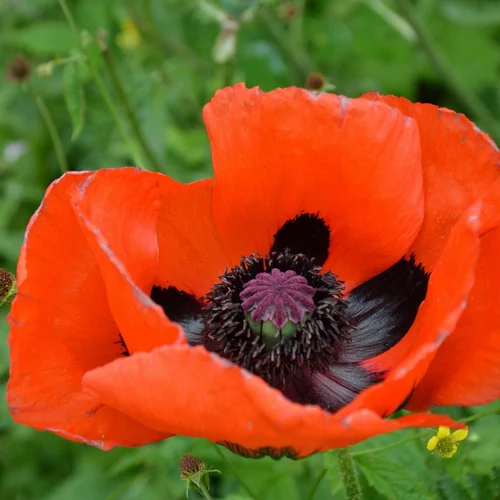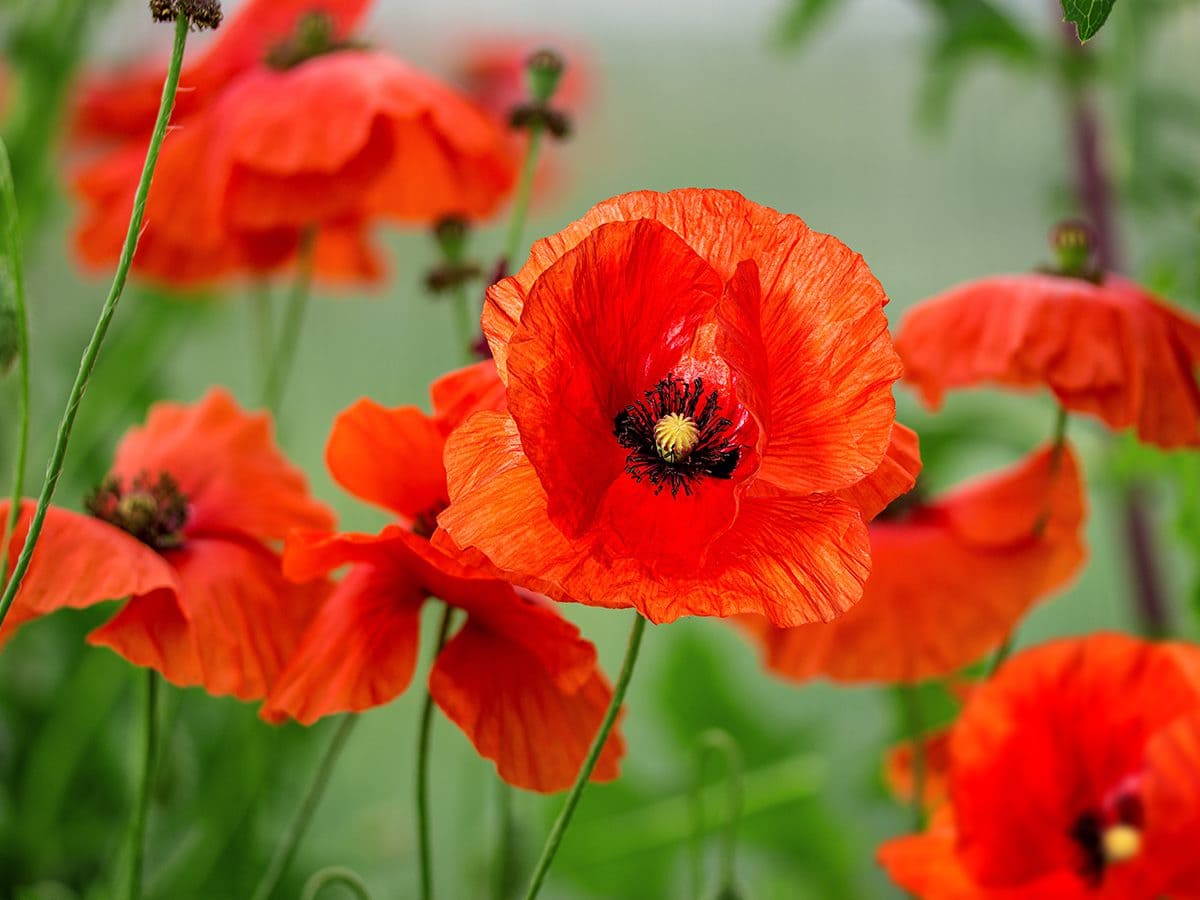
It’s time for August’s birth flower: the poppy! We all know that the poppy flower is an important symbol of remembrance for veterans. But this little red flower has more to its history than just remembrance. Let’s go back in time to learn about the poppy!
It’s pretty common knowledge that poppies contain opium, which is an ingredient in certain narcotics. Poppies are actually banned in China, Taiwan and Singapore because they contain opium. But did you know that this little flower has actually been an important ingredient in medicine for thousands of years?
The opium poppy is believed to have evolved from a wild strain that grows in coastal areas in the Mediterranean Sea. It took centuries to cultivate the opium poppy that we know today. There is only one kind of opium poppy, the Papaver somniferum, which belongs to the genus Papaver, or the Greek word for “poppy.” Somniferum is Latin for “sleep inducing.”
Hippocrates of Kos, a Greek physician and the father of medicine, recommended drinking the juice of a white poppy mixed with the seed of nettle. In addition, the flower was mentioned throughout history in different ancient cultures, including Ancient Egyptians. In fact, King Tutankhamun, the boy king who was entombed in 1325 BC wore clothes partially made from poppies, as well as having illustrations of the flower on his jewellry and furniture.
The opium poppy arrived in Ancient China in around the 800s, because Arab traders had advocated for its use in medicine. However, it is noted that the Ancient Chinese surgeon Hua To of the Three Kingdoms used opium on his patients before surgery, which occurred in 220-264 AD.
In 1803, a German pharmacist named Serturner isolated and described opium’s principal alkaloid, which he dubbed morphium, after Morpheus, the Greek god of dreams. Other alkaloids were discovered: codeine in 1832 and papaverine in 1848. This meant that the medicinal use of opium was greatly advanced.
In the United States, opium became widely available in the 1800s and morphine was a common painkiller for soldiers fighting in the Civil War. However, this resulted in “opium addiction,” otherwise known as “the army disease,” or “soldier’s disease.”
Poppies are seen on the coat of arms of the Royal College of Anaesthetists, because they represent general anaesthetic, as well as analgesia.
Poppies have both advantages and disadvantages, but they were extremely influential in the making of painkillers. So if you see a poppy, think about all of the lives it’s influenced (and maybe don’t bring it along with you if you travel abroad)!


